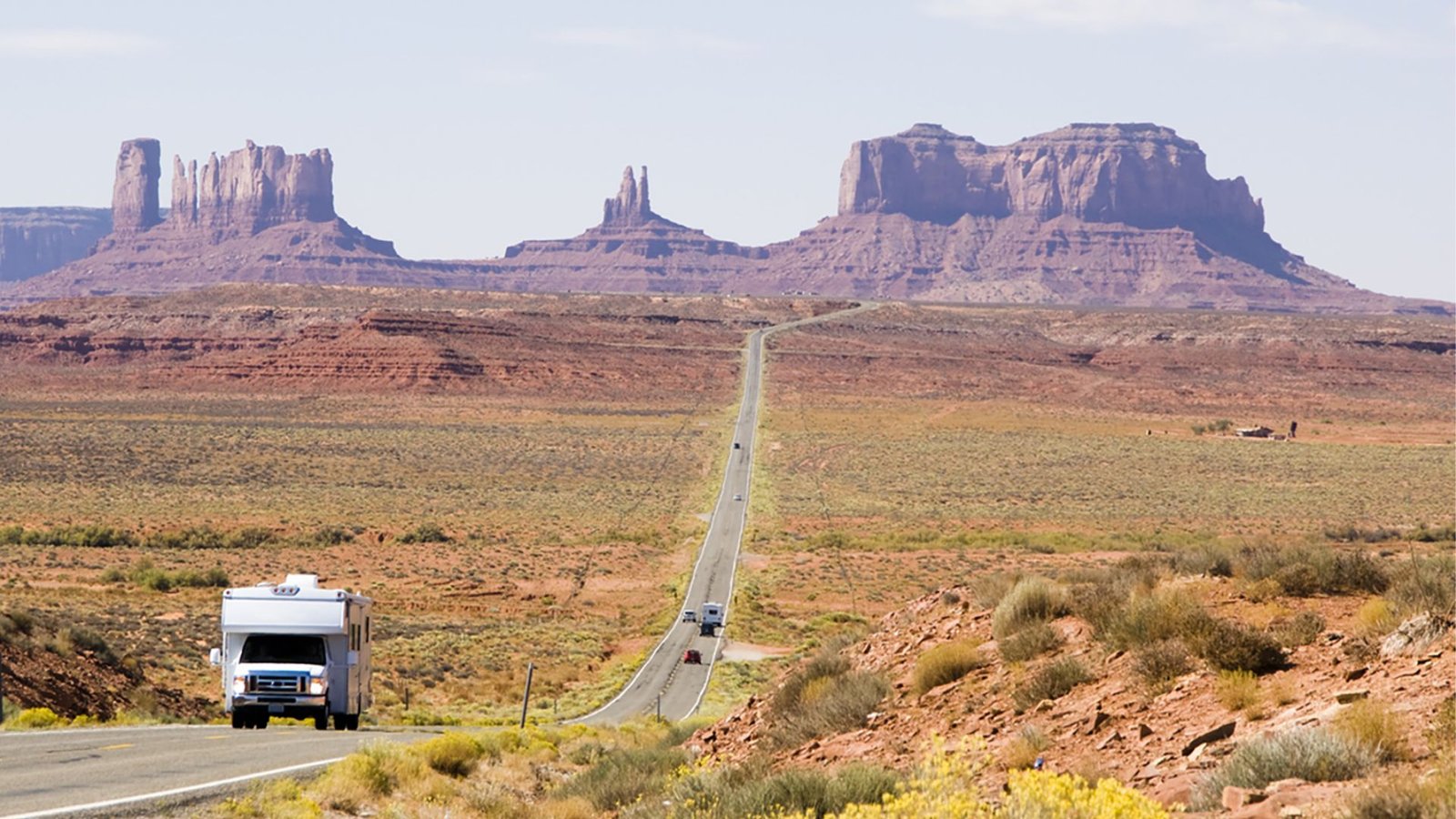There’s something absolutely magical about America’s sprawling landscapes that just calls out to anyone with a taste for adventure. A USA cross-country RV trip gives you this incredible freedom—imagine rolling through desert sunsets one day and waking up to mountain views the next! But here’s the thing: the difference between a fantastic journey and a total disaster? It’s all in the planning, my friend.
This RV travel guide isn’t just another boring list of dos and don’ts. We’re talking real-world advice from folks who’ve actually done this, made the mistakes, and lived to tell the tale (with some pretty great stories, too).
Getting Your Ducks in a Row Before You Hit the Road
Look, I’ll be straight with you—successful road trips don’t just happen by accident. They start way before you even think about turning that key. You’ve got to nail down your ride, figure out your budget, and honestly? Make sure you can stay connected when you’re out there in the middle of nowhere.
Speaking of staying connected, this is where something like a usa travel esim becomes a total game-changer. Trust me on this one—you’ll want reliable internet when you’re trying to find that perfect campsite or need to video call the grandkids from some gorgeous overlook.
Picking the Perfect RV That Won’t Drive You Crazy
Here’s what nobody tells you upfront: your RV choice can make or break this whole adventure. After talking to dozens of cross-country veterans, most swear by Class C motorhomes in that sweet spot of 25-35 feet. Why? They’re not so massive that you’re white-knuckling every turn, but they’ve got enough room that you won’t want to strangle your travel buddy by week two.
Think about it this way—how many people are you dragging along? What kind of stuff do you absolutely need versus what you think you need? And be honest about your driving skills. There’s zero shame in renting a few different styles first to see what clicks.
Money Talk (Because Someone Has to Bring It Up)
Let’s get real about costs for a hot minute. The good news? You’re actually going to save serious cash compared to flying everywhere and staying in hotels. The RV industry folks say families can save up to 60% going the RV route instead of traditional vacations. That’s not pocket change we’re talking about!
Break it down like this: gas money, where you’re sleeping, food, and fun stuff. Pro tip from someone who learned the hard way—gas prices can swing wildly depending on where you are, so pad that budget. And campground fees? They’re all over the map, literally.
Timing Is Everything (Seriously)
You know what’s frustrating? Showing up somewhere amazing only to find out it’s closed for the season. Late spring and early fall are absolute gold for cross-country trips—weather’s cooperating, crowds are manageable, and you won’t pay those crazy summer prices.
Make sure your license is good to go for the whole trip. And insurance? Yeah, double-check that it actually covers RVs. Some states get picky about bigger vehicles, so do your homework before you’re stuck at a weigh station somewhere.
The Best Routes That Won’t Make You Regret Everything
Route planning isn’t just about getting from point A to point B—it’s about finding roads that actually welcome your big rig and show you the good stuff along the way. RV trip planning means thinking beyond just the shortest distance.
The Northern Route: I-90 and Its Gorgeous Alternatives
Interstate 90 is like the reliable friend of cross-country routes. It stretches 3,020 miles from Seattle all the way to Boston, and honestly? It’s pretty accommodating for RVs. You’ll cruise through some absolutely stunning scenery—from those dramatic Cascades in Washington through the otherworldly Badlands of South Dakota.
The infrastructure along I-90 is solid gold for RV folks. Plenty of truck stops that can actually handle your rig, and you won’t be constantly stressing about clearances. Just keep in mind that spring and summer are your friends here—mountain passes can still throw you curveballs with late snow.
Southern Routes and Central Options That Don’t Suck
If you’re not a fan of cold weather (and who can blame you?), I-10 from California to Florida is your ticket to year-round travel possibilities. You’ll trade mountain drama for desert beauty and Gulf Coast charm—plus, you’ll avoid most of those sketchy mountain grades that make your knuckles go white.
Now, I-80 through the middle of the country? That’s your most direct shot from San Francisco to New York. But heads up—this route doesn’t mess around when it comes to mountain crossings. The Sierra Nevada and Rockies are absolutely gorgeous, but they demand respect and preparation.
Weather Reality Check
Here’s something that might surprise you: the best RV routes in the USA completely change depending on when you’re traveling. Mountain passes in winter? That’s a hard no. Southern routes in summer? You might melt. It’s all about timing and flexibility.
Do yourself a favor and research elevation changes before you commit to a route. Your RV (and your stress levels) will thank you for splitting those big mountain climbs across multiple days instead of trying to be a hero.
Real-World Road Trip Tips That Actually Matter
The difference between RV pros and people posting horror stories on Facebook? It’s usually preparation and knowing what you’re doing behind the wheel. These cross country road trip tips come straight from folks who’ve learned lessons the hard way.
Vehicle Prep That Could Save Your Trip
Nothing kills road trip vibes faster than breaking down in the middle of nowhere. Get a professional to look at your engine, transmission, brakes, and tires at least two weeks before you leave. Why two weeks? Because if they find something wrong, you’ve got time to fix it without panic-buying expensive parts.
Test everything while you’re still in your driveway. Slide-outs, appliances, that finicky water pump—if it’s going to break, better at home than at some remote campground where the nearest repair shop is 200 miles away.
Driving Techniques That Won’t Terrify You
Let’s be honest—driving an RV across the country is intimidating as hell, especially when you’re starting out. The size and weight mean you can’t just wing it like you would in your regular car. Find a big empty parking lot and practice everything: turns, backing up, just getting a feel for how much space you actually need.
Slow and steady wins this race. Use truck lanes when you can, and for the love of all that’s holy, plan your gas stops around places where you can actually get in and out without taking out a canopy.
Campground Strategy and Tech That Makes Life Easier
The days of just hoping to find a spot are pretty much over. Smart campground planning mixed with the right apps can turn potential disasters into smooth sailing.
Booking Strategy That Actually Works
Popular spots—especially anything near national parks—book up faster than concert tickets. Reserve those must-see places first, then build everything else around them. But don’t go crazy with reservations for every single night. Some of the best discoveries happen when you can be spontaneous.
Private campgrounds usually have better amenities, but they’ll cost you more. If you’re planning multiple cross-country trips, those membership programs like Good Sam might actually pay for themselves.
Apps and Tech That Don’t Suck
Forget those old campground directories—apps like Campendium, FreeRoam, and AllStays are total game-changers. Real photos, honest reviews, current availability—it’s like having a scout team ahead of you.
Download offline maps before you hit dead zones. And invest in RV-specific GPS that knows about height restrictions and weight limits. Trust me, a regular car GPS will try to send you places your RV has no business going.
The Questions Everyone Asks (And Honest Answers)
- How much time do I really need for a cross-country RV trip?
If you want to actually enjoy it instead of just surviving it? Plan on at least 4-6 weeks minimum. Want the full experience without feeling rushed? Two to three months is the sweet spot.
- What size RV should I get?
That 25-35 foot Class C range is popular for good reason—big enough to be comfortable, small enough that you won’t hate your life trying to park it.
- What’s this going to cost me?
Budget somewhere between $150-300 per day for everything—gas, campgrounds, food, activities. A month-long trip usually runs $4,500-9,000, depending on how fancy you get.
Can I actually work while doing this?
Absolutely! Remote work and RV life are becoming best friends. Just have backup internet plans for when you’re in the boonies.
What’s the biggest mistake people make?
Overpacking, hands down. And not practicing with their RV before the big trip. Oh, and underestimating how long it takes to actually get places.
Making Your Cross-Country Dreams Reality
Your USA cross country RV trip isn’t just a vacation—it’s investing in memories that’ll last way longer than any fancy gadget or expensive dinner. Smart RV trip planning turns what could be a stressful mess into pure adventure gold. And knowing the best RV routes in the USA means you’ll see incredible stuff while staying safe and sane.
Remember this: plan like crazy, but stay flexible enough to chase that perfect sunset or explore that random roadside attraction that catches your eye. America’s got more beautiful surprises than you can imagine, and with solid preparation, your cross-country RV adventure is going to blow your mind in the best possible way.










